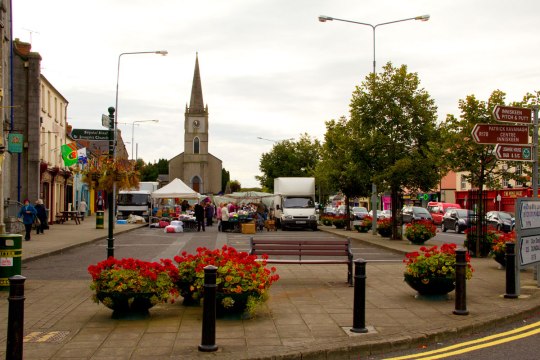Inniskeen
Peaceful Island
Inniskeen, officially Inishkeen (Irish: Inis Caoin, meaning “peaceful island”), is a small village and parish in County Monaghan, Ireland, close to the County Louth and County Armagh borders. It is located about 17 km from Dundalk and 12 km from Carrickmacross and 5 km from Crossmaglen (here are directions how to get there).
This territory had been inhabited from the late Neolithic/Early Bronze Age. Rock art carvings (Petroglyphs) have been discovered in adjoining townlands (including Drumirril) dating to 3000 BC. Cup and ring markls with concentric circles are the main inscriptions.
A monastery was founded here in the 6th century by Saint Daigh MacCarell which was burned in 789, plundered by the Vikings in 948, and burned a second time in 1166. The bottom third of the round tower remains. In this drumlin country many of the hill tops have hill forts and associated souterrains which date from the late Iron Age or early Christian era. The country was part of McMahon Clann territory who displaced Carrolls in the 9th century as the dominant force in the area.
The arrival of the Normans saw the construction of a Motte-and-bailey in the 13th century, The motte is still standing. The arrival of the Augustinian order of monks saw the construction of a new monastery of that order as a branch of the Abbey at Louth. One section of its wall remains adjoining the graveyard in the field adjoinhing the Motte.
The Patrick Kavanagh Centre is set up to commemorate the poet Patrick Kavanagh.The Centre houses exhibitions outlining Kavanagh’s lifestory and local history. It is located in the former RC St. Mary’s church in whose adjoining graveyard Kavanagh and his wife are buried.










































